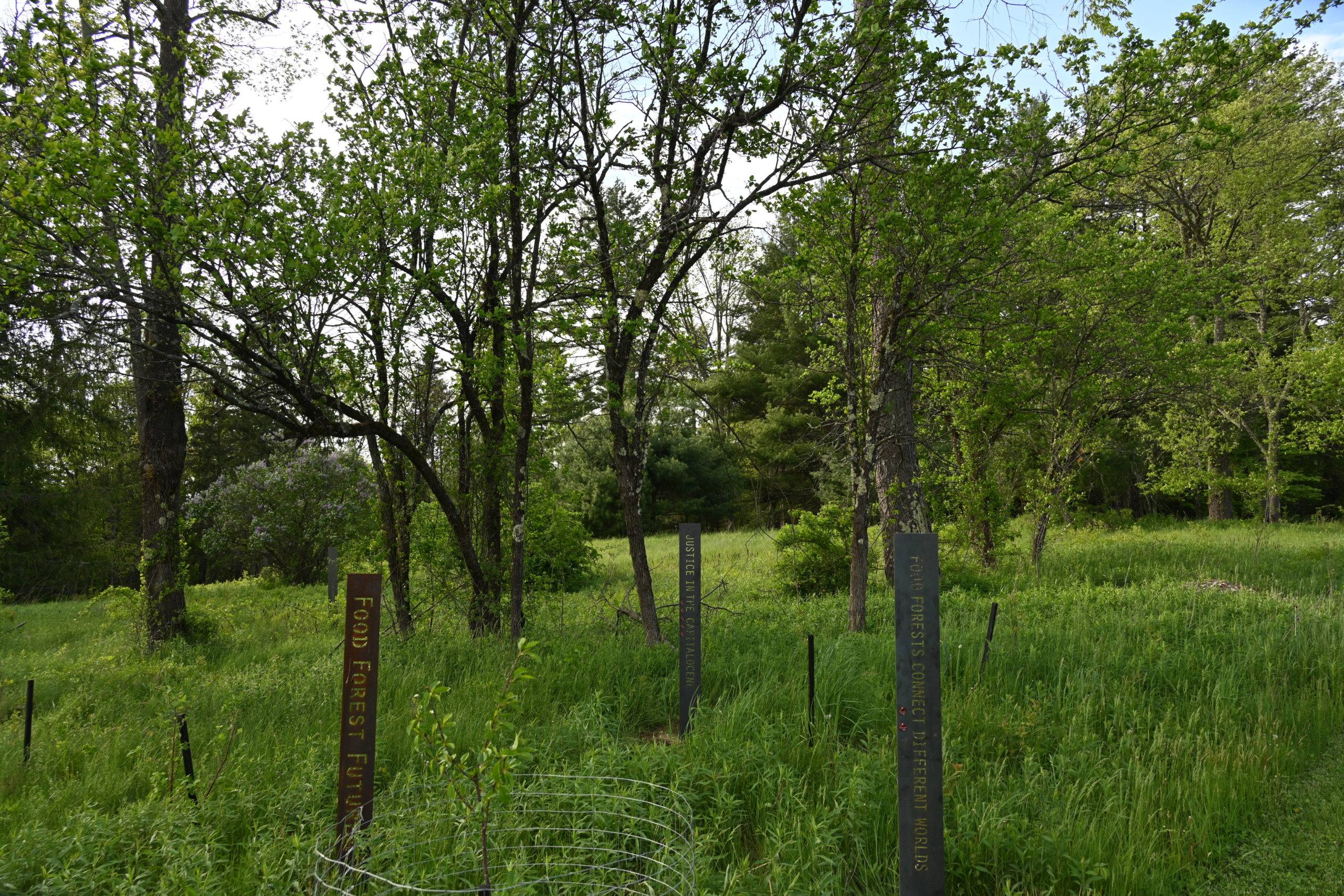In spring 2019, Bennington College was awarded $1 million from the Mellon Foundation to launch a three-year collaborative effort with local partners to address the systemic causes of food insecurity in Bennington County. To inaugurate the associated Food Summit, Colgate University Assistant Professor of Art Margaretha Haughwout was invited to create Food Forest Futures, a living installation, at the Robert Frost Stone House Museum.
“Food insecurity — the inability to access affordable, nutritious food — affects one in eight Americans, or approximately 40 million people, and is particularly acute in southern Vermont,” a statement from the Bennington says. “This collaboration aims to both address the pressing problem of food insecurity in the area and to develop an interdisciplinary and responsive humanities curriculum with students, faculty, and the community, creating a model from which other higher education institutions can learn and build.”
As Haughwout describes it, Food Forest Futures draws from Indigenous, permaculture, and bio-intensive design strategies to introduce seven layers of a food forest, attract beneficial animals, microbes, and insects, and integrate plantings of beneficial, medicinal, edible plants. Rather than having one plant crop per row, plants are mixed together based on how they can help one another — through nutrients, structure, resistance to pests. These plant companions spark new understandings of how the cultivation of biodiverse food and habitat for our nonhuman kin simultaneously generates food and habitat for humans.
Food Forest Futures recognizes differing opportunities for cultivating commons, and invites visitors and participants in the Food Summit to choose the combinations of plants, seeds, and associated reading materials on offer to continue commoning in backyard, community, or guerrilla manifestations.
To accompany the project, and reach a larger audience, Haughwout created a manifesto, a tabloid publication, a map and a website. To learn more about the project, visit foodforestfutures.net.
